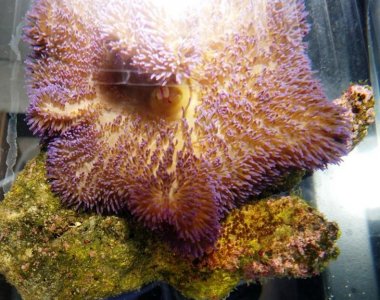D-Nak
Active member
Looks much better. Glad you were able to save it.
I've seen my clowns rub the center of one of my gigs which prevents the tentacles from expanding, and it appears to almost wear them down into short nubs. I don't think it permanently damages the nem and it seems to quickly recover once the clowns stop focusing on one part of the nem.
I've seen my clowns rub the center of one of my gigs which prevents the tentacles from expanding, and it appears to almost wear them down into short nubs. I don't think it permanently damages the nem and it seems to quickly recover once the clowns stop focusing on one part of the nem.

